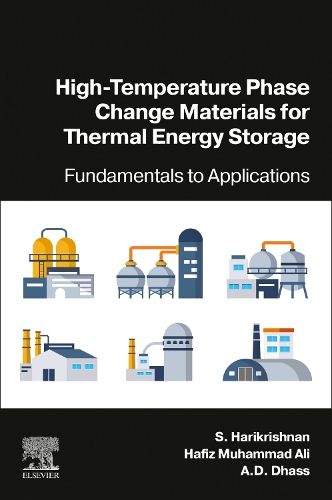Readings Newsletter
Become a Readings Member to make your shopping experience even easier.
Sign in or sign up for free!
You’re not far away from qualifying for FREE standard shipping within Australia
You’ve qualified for FREE standard shipping within Australia
The cart is loading…






High-Temperature Phase Change Materials for Thermal Energy Storage covers the fundamentals, thermal characteristics, measurement, design, and applications of high-temperature phase change materials (PCMs) for thermal energy storage, supported by examples and numerical modeling. The differences between low-temperature and high-temperature PCMs are examined with respect to thermophysical properties, phase change properties, and melting/solidification processes, with detailed coverage of how to alter or shorten the phase transition temperature range between melting and solidification, providing routes for the utilization of PCMs for specific high-temperature applications. The book also addresses key challenges, such as the design of PCM containers, phase transition temperature with little deviation, high latent heat capacity, thermal conductivity, viscosity, efficiency, ecocompatibility, and cost.
This book is a valuable resource for researchers, advanced students, and scientists across the areas of energy storage, power generation, energy engineering, thermodynamics, materials science, renewable energy, energy management, mechanical engineering, and chemical engineering as well as engineers, research and development professionals, and other industry personnel with an interest in thermal energy storage design and materials.
$9.00 standard shipping within Australia
FREE standard shipping within Australia for orders over $100.00
Express & International shipping calculated at checkout
High-Temperature Phase Change Materials for Thermal Energy Storage covers the fundamentals, thermal characteristics, measurement, design, and applications of high-temperature phase change materials (PCMs) for thermal energy storage, supported by examples and numerical modeling. The differences between low-temperature and high-temperature PCMs are examined with respect to thermophysical properties, phase change properties, and melting/solidification processes, with detailed coverage of how to alter or shorten the phase transition temperature range between melting and solidification, providing routes for the utilization of PCMs for specific high-temperature applications. The book also addresses key challenges, such as the design of PCM containers, phase transition temperature with little deviation, high latent heat capacity, thermal conductivity, viscosity, efficiency, ecocompatibility, and cost.
This book is a valuable resource for researchers, advanced students, and scientists across the areas of energy storage, power generation, energy engineering, thermodynamics, materials science, renewable energy, energy management, mechanical engineering, and chemical engineering as well as engineers, research and development professionals, and other industry personnel with an interest in thermal energy storage design and materials.